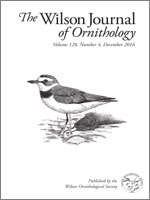Populations of the Eastern Whip-poor-will (Antrostomus vociferus) are thought to be declining because of a range of potential factors including habitat loss, pesticide use, and predation. However, this species is nocturnal and, as a consequence, it is poorly studied, and its population status is not well assessed by traditional diurnal bird surveys. We used nocturnal road surveys to study habitat associations and distribution of Eastern Whip-poor-wills to better understand and contextualize their population status and to provide a framework for subsequent research and management. We used occupancy models to associate presence of Eastern Whip-poor-wills with habitat characteristics. Global models with habitat associations at a radius of 1600 m (1.0-ha area) were the best supported by the data, suggesting that this was the scale at which the species responded to the habitat parameters we measured. At this scale, Eastern Whip-poor-wills most frequently occupied areas lower in elevation and characterized by forested, herbaceous, and wetland cover types. In contrast, high elevation conifer forest communities had substantially fewer Eastern Whip-poor-wills. Detection rates were positively correlated with moon visibility and negatively correlated with noise. We used the results of our surveys to generate a regional model to predict distributions of Eastern Whip-poor-wills and that can be used as a framework for future management. Our results suggest that succession of agricultural fields and other clearings into forested habitats with dense understory may be a contributing factor to ongoing declines of Eastern Whip-poor-wills.
How to translate text using browser tools
1 December 2016
Eastern Whip-Poor-Wills (Antrostomus vociferus) Are Positively Associated With Low Elevation Forest In the Central Appalachians
Christina L. Slover,
Todd E. Katzner
ACCESS THE FULL ARTICLE
Antrostomus vociferus
Eastern Whip-poor-will
elevation
forest edge
land cover types
occupancy modeling
predictive map





